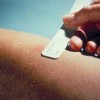Acquisition of Pseudomonas cepacia at summer camps for patients with cystic fibrosis. Summer Camp Study Group
Abstract
To assess the risk of acquisition of Pseudomonas cepacia by person-to-person transmission at cystic fibrosis summer camps, we conducted in 1990 a study at three camps attended by patients with cystic fibrosis who had P. cepacia infection and patients without P.… Read more
